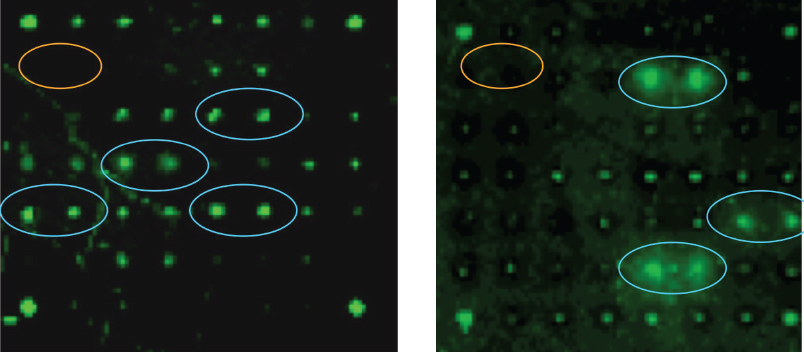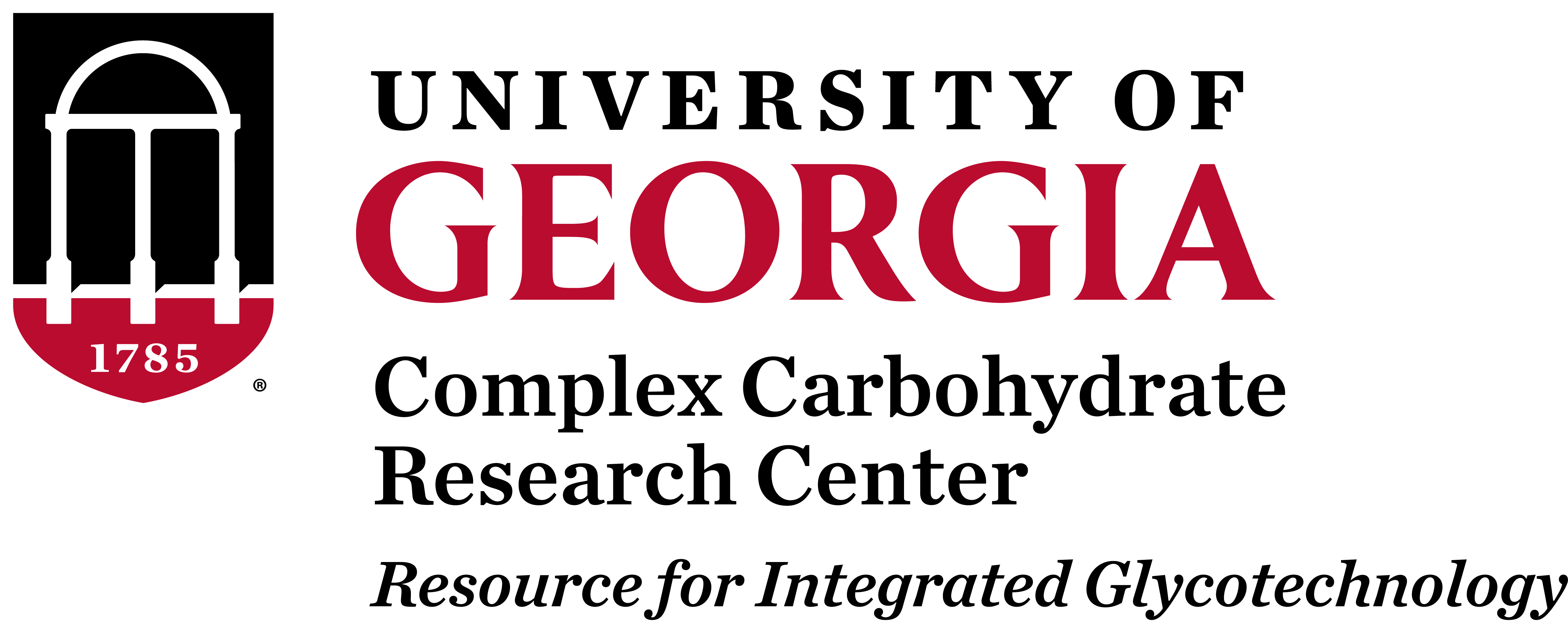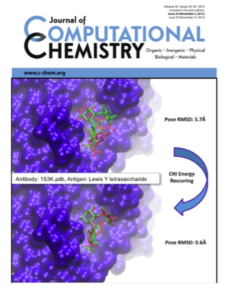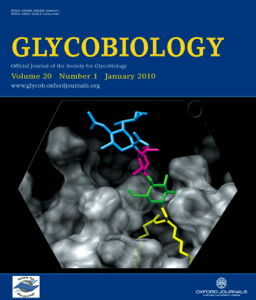Resource investigators actively disseminate our technologies through presentations, publication in journals and news articles.
Representation at International Meetings
Numerous presentations at International Symposium on Glycoconjugates, Proteoglycan and Glycobiology Gordon conferences and the Society for Glycobiology meetings. More than 50 presentations annually credit resource technologies, and investigators have organized, Chaired, or Co-chaired of over 10 glycoscience related national and international meetings each year.
National Academy of Sciences Report
In 2012, Drs. Darvill and Boons served on the National Academy of Sciences committee and authored the report “Transforming Glycoscience, a Roadmap for the Future” that emphasized generation and dissemination of better tools for glycoscience and hands-on training and education.
Georgia Glycoscience Symposium
The annual international symposium hosted by the CCRC presents cutting edge carbohydrate research, including the 9thth Georgia Glycoscience Symposium (September 2015, “Proteoglycans and their Role in Heath and Disease”) focusing on tools developed by the Resource.
Awards
Recognition of research by Resource investigators include: Boons: 2012 Creative Research Inventor Award, University of Georgia Research Foundation and in 2014 was selected Roy L. Whistler International Award in Carbohydrate Chemistry by the International Carbohydrate Organization (ICO), Woods: 2014 UGA Faculty Entrepreneur of the Year, Amster: Elected a Fellow of AAAS in 2010, Moremen: 2014 Distinguished Research Professor, University of Georgia Research Foundation.
Workshops
Four annual hands-on trainings at CCRC (See Training section)
Dr. Amster co-taught a two-day short course, Mass Spectrometry of Glycans and Glycoproteins, at the ASMS Conference on Mass Spectrometry and Allied Topics, in 2012, 2013, 2014. Dr. Azadi is a co-organizer of the New and Emerging Technologies Workshop at the “Well Characterized Biotechnology Pharmaceutical in 2014.”
Consortium for Functional Glycomics (CFG)
Boons member of the steering committee of the CFG and Prestegard and Woods are CFG subgroup leaders. CFG and Resource investigators partnered in 2012 for the Georgia Glycoscience Symposium and CFG Workshop (“Paradigms for Glycan Action in Development and Disease”) Prestegard organized the CFG Participating Investigator Meeting and Symposium in 2012, co-Investigator on the CFG Workshop Grant for “Development and Application of Transformative Technologies in Glycobiology”.
Annual Society for Glycobiology
Moremen has been Secretary of the Society from 2005-present.
Azadi has been invited speaker at the satellite meeting in 2008-2012, in 2013 organized a booth, which displayed brochures and protocols on CCRC’s service and training.
Protocols and Reagents
Protocols distributed for isolation, purification and characterization of polysaccharides and glycoproteins Provide reagents (e.g. purified enzymes and synthesized oligosaccharides) generated through technology projects. Constructs produced as a supplement to the Resource as a “Repository for Glycan Related Enzymes” made available through the PSI Materials Repository at Arizona State University (dnasu.org). Proteoglycan resources include heparan sulfate oligomer arrays, mutant mouse endothelial cell lines defective in HS biosynthesis and modification, and others.
Publications and News Articles
In the last funding cycle our investigators published >100 research articles, an additional 12 publications are in press, and an additional 9 publications from Analytical Services have cited the grant number. Some of our particularly noted publications include:
- Wang, Z., Chinoy, Z., Ambre, S., Peng, W., McBride, R., de Vries R.P., Glushka, J., Paulson, J.C., & Boons, G.J. (2013). A general strategy for the chemoenzymatic synthesis of asymmetrically branched N-glycans. Science 341, 379-383
Highlighted in:
- Science: Kiessling, L.L. & Kraft, M.B. (2013). A path to complex carbohydrates. Science 341(6144), 357-358
- C&E News: Arnaud, C.H. (2013). Branching out in different ways. Carbohydrate chemistry: New synthetic strategy leads to asymmetrically branched N-glycans. C&E News 91(30), 9
- Nature News: Johnston, R. (2013). Asymmetrical glycans synthesized in lab. Nature News (25 July 2013)
- Ly, M., Leach, F.E. 3rd, Laremore, T.N., Toida, T., Amster, I.J., & Linhardt, R. (2011). The proteoglycan bikunin has a defined sequence. Nature Chemical Biology 7, 827-833
Highlighted in:
- News and Views article: Jones, C.J. and C.K. Larive. (2011). Carbohydrates: Cracking the glycan sequence code. Nature Chemical Biology 7, 758-759
- C&E News: Highlighted as a Technology Concentrate. December 8, 2011
- Barb, A.W. & Prestegard, J.H. (2011). NMR analysis demonstrates immunoglobulin G N-glycans are accessible and dynamic. Nature Chemical Biology 7, 147-153
Highlighted in:
- News and Views article in Nature Chemical Biology: Meier, S. & Duus, J. (2011). Carbohydrate dynamics: Antibody glycans wiggle and jiggle. Nature Chemical Biology 7, 131-132 (doi:10.1038/nchembio.526)
- Chen, H., Ji, F., Olman, V., Mobley, C.K., Liu, Y., Zhou, Y., Bushweller, J.H., Prestegard, J.H., & Xu, Y. (2011). Optimal mutation sites for PRE data collection and membrane protein structure prediction. Structure 19, 484-495.
Highlighted in:
- Preview article in Structure: Ganguly, S., Weiner, B.E., & Meiler, J. (2011). Membrane protein structure determination using paramagnetic tags. Structure 19, 441-443 (doi:10.1016/j.str.2011.03.008)
Cover Illustrations
Journal of Computational Chemistry Cover-Mockup selected for publication in 2014
Nivedha, et al. (2014). The importance of ligand conformational energies in carbohydrate docking: Sorting the wheat from the chaff. J. Comput. Chem., in press.
Glycobiology Cover Illustration
Illustrates a snapshot of ganglioside GM3 (Neu5Acα3Galβ4GlcCer) in a lipid bilayer (gray) from an all-atom explicit-solvent molecular dynamics simulation of the ganglioside using the
GLYCAM force field from Glycobiology Vol. 19, 2010.
Chembiochem Review Frontispiece in 2013
Live, et al. (2013). Dissecting the molecular basis of the role of the O-mannosylation pathway in disease: α-Dystroglycan and forms of muscular dystrophy. Chembiochem 14, 2392-402.
Faculty News Highlights
Parastoo Azadi
Highlighted in C&E News, Nov 15th 2010, “Conventional methods are inadequate when it comes to quantitative and structural analysis”.
David Live
Highlighted in Science, Jan 7th 2011, Life Sciences Technologies feature, Glycoproteomics: The sweet smell of we’re getting there”.
Joshua Sharp
Highlighted in Atlanta Business Chronicle, Sharp’s article Nov 16th 2012: “HIV research looks to copy natural immunity”.
Geert-Jan Boons
Highlighted in Athens Patch, June 11th 2013: “UGA research provides insight into a debilitating brain disease”, Coverage in Athens Banner-Herald and UGA Research Magazine, Spring/Summer 2013: “A sweet spot for sleuthing sugars”; UGA Research, June 2013: “Fighting cancer with carbohydrates”.












